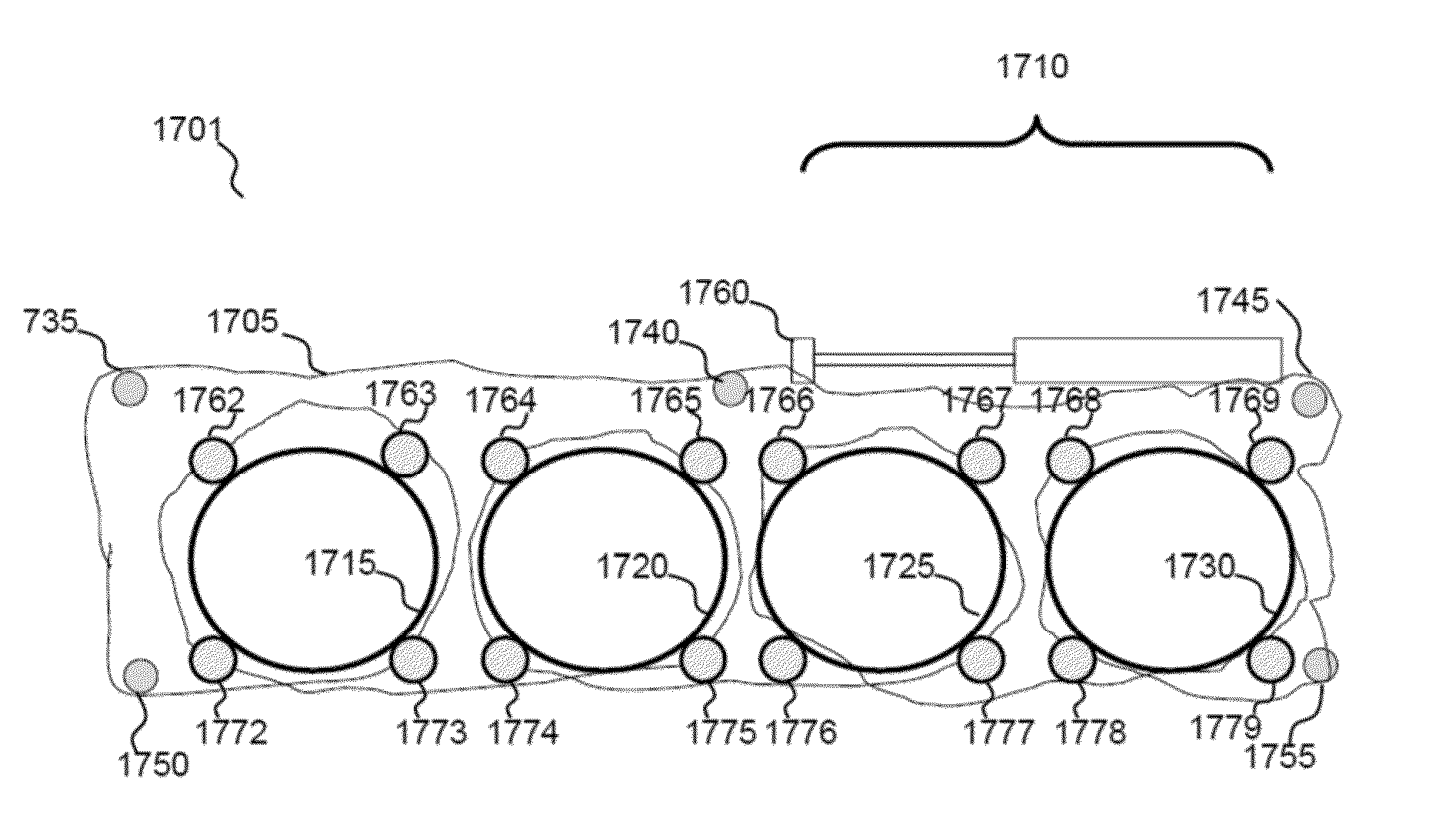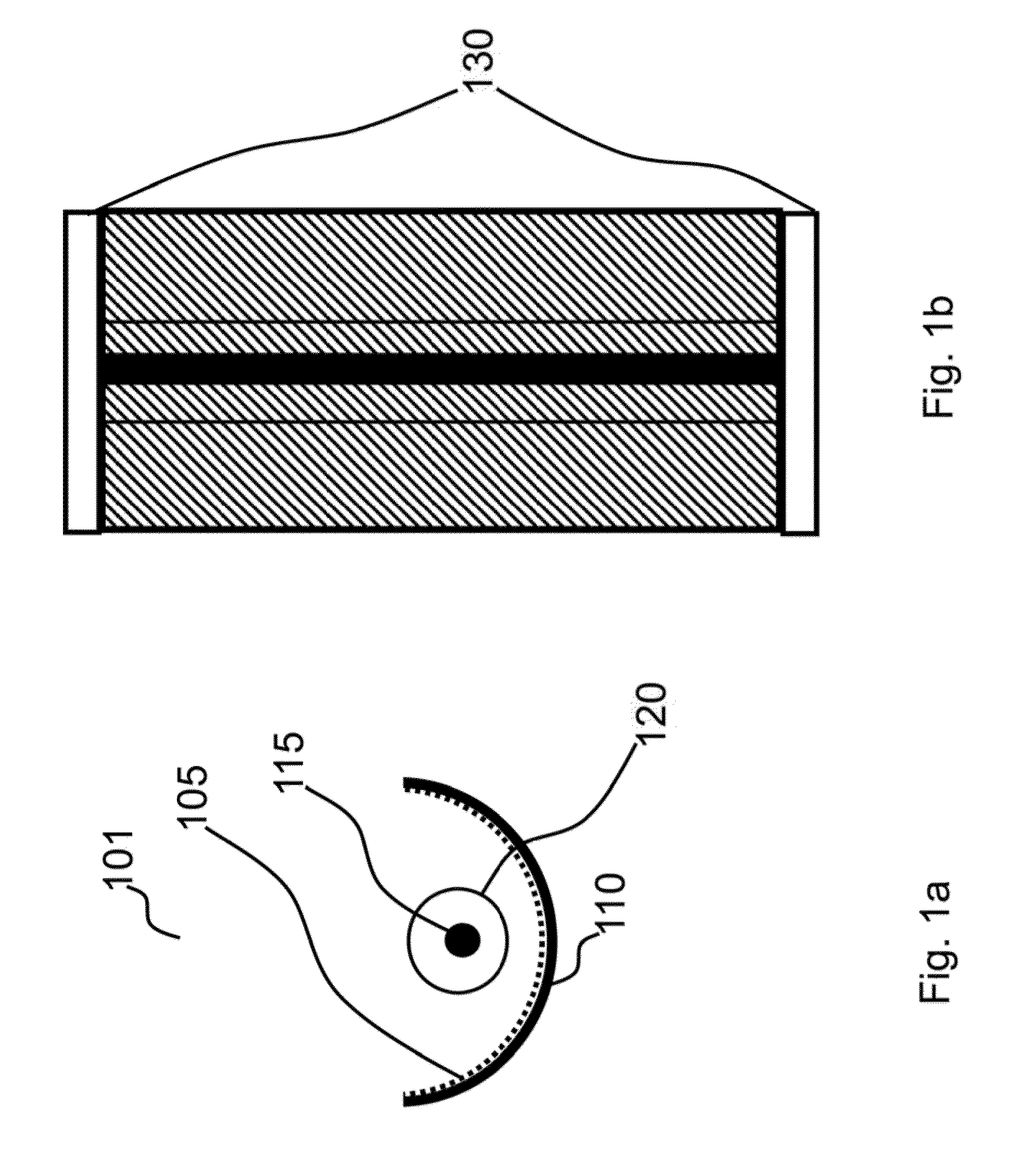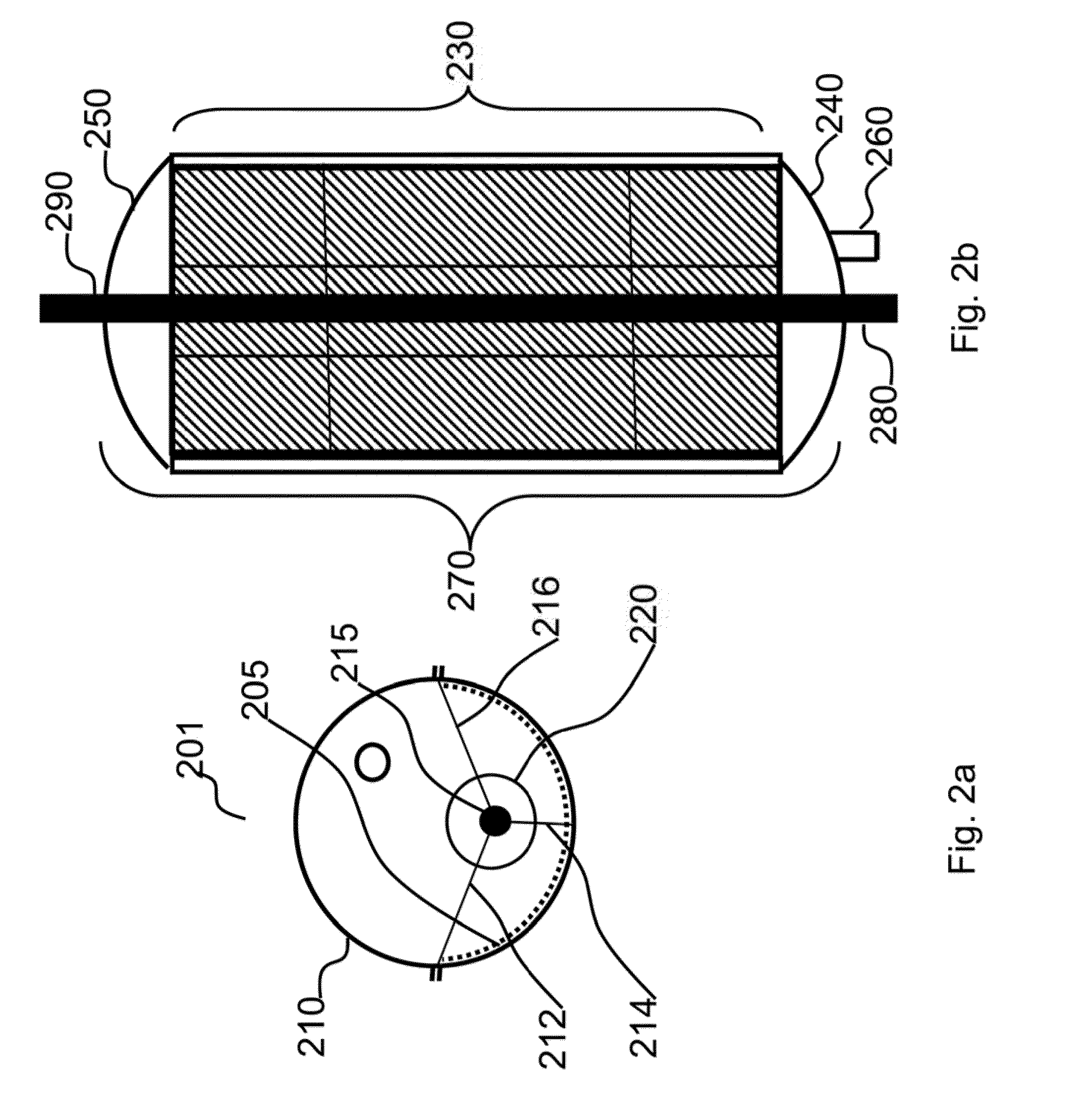Tracking system for lightweight solar collector assembly and array
- Summary
- Abstract
- Description
- Claims
- Application Information
AI Technical Summary
Benefits of technology
Problems solved by technology
Method used
Image
Examples
Embodiment Construction
[0051]FIG. 1a is an end view of a solar energy collector 101 utilizing the lightweight aperture of the invention. FIG. 1b is a top view of the solar energy collector 101 of FIG. 1a, and can be either a complete collector or section of a longer collector. Solar energy collector 101 is an example of a concentrator. Solar energy collector 101 comprises a reflector 105 with a concentrating shape, which in this case is approximately the shape of a parabolic trough. The parabolic trough shape is a specific example of an approximately constant cross-section shape. The parabolic trough shape is a specific example of a surface with substantial curvature in only one dimension. Reflector 105 is held in place and in shape by trough 110 which is an example of a first support means for the reflector 105. By itself, reflector 105 would not be able to maintain its shape against the force of gravity since it is very thin and hence very flexible. A preferred example of reflector 105 is a metallized (...
PUM
 Login to View More
Login to View More Abstract
Description
Claims
Application Information
 Login to View More
Login to View More - R&D
- Intellectual Property
- Life Sciences
- Materials
- Tech Scout
- Unparalleled Data Quality
- Higher Quality Content
- 60% Fewer Hallucinations
Browse by: Latest US Patents, China's latest patents, Technical Efficacy Thesaurus, Application Domain, Technology Topic, Popular Technical Reports.
© 2025 PatSnap. All rights reserved.Legal|Privacy policy|Modern Slavery Act Transparency Statement|Sitemap|About US| Contact US: help@patsnap.com



